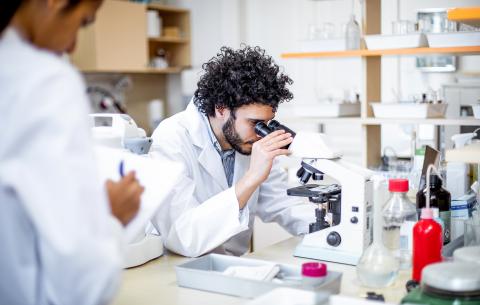Collaborate With Us

Collaborating with the Dystonia Coalition
The Dystonia Coalition is a collaboration of medical researchers and patient advocacy groups previously supported by the Division of Rare Diseases Research Innovation (DRDRI) in the National Center for Advancing Translational Sciences (NCATS) and The National Institute of Neurological Disorders and Stroke (NINDS) at the NIH. We are about 35 participating centers distributed throughout North America, Canada, Europe, Australia, and Asia. The Dystonia Coalition has an open-door policy in which new investigators and institutions may join the effort at any time. Each of these centers may participate in ongoing research projects, submit proposals for new projects, or nominate candidates for career development awards.
Specific Goals
Natural History Project
The aim of this project is to better characterize the heterogeneity of clinical manifestations among subjects with dystonia, how these manifestations evolve over time, and how they relate to potentially affected family members. More than 3000 cases have been recruited since 2009, many of whom continue to be followed. A fuller understanding of clinical features and especially their evolution is an essential prerequisite for testing any disease-modifying therapies that could halt or slow progression.
Patient-Centered Outcomes Project
The aim of this project is to delineate both between-subject and within-subject variations over time in response to the standard of care treatment with Botulinum toxin (BoNT) injections. Typically, injections are required about every three months. Therapeutic benefits emerge within the first week and then wear off after 8-16 weeks, creating a cyclical response known as the “yo-yo” effect. The development of any novel “add-on” therapeutics or replacement therapeutic is hampered by incomplete knowledge of individual temporal responses. Currently, measurement tools rely on clinical rating scales which are subjective, cumbersome for repeated frequent use, and require extensive expertise to apply. This project will develop a patient-facing tool on a hand-held electronic device, such as a smartphone.
Objective Measures Project
The aim of this project is to exploit technological advances for development of objective tools to measure the severity of dystonia. Current diagnostic and severity measures depend almost entirely on subjective clinician-rated or patient-rated scales. This project will exploit digital video software to analyze common abnormalities seen in blepharospasm, cervical dystonia, and laryngeal dystonia. This new technology could ultimately replace subjective clinical rating scales as outcome measures. Such tools could also be used for telemedicine.
Biobank Project
The aim of this project is to develop a resource that expands the existing DNA biorepository to include other biomaterials. To date, no large multicenter open-access biorepository exists for any type of dystonia. Such a biobank is essential for improving our understanding of the pathogenesis of the dystonias, so that rational therapies can be planned. It also is essential for exploration of biomarkers of disease activity that may provide useful outcome measures in clinical trials, or insights into pathogenesis.
Available Opportunities
In addition to current studies outlined above, the Dystonia Coalition will also encourage the development of new studies and investigators relevant to dystonia, promote education and awareness of dystonia, and assist patients in finding state-of-the-art information and expert providers.
Projects Utilizing Dystonia Coalition Resources
The resources collected in the Dystonia Coalition’s studies are available for further research inquiries. Many pilot projects and career development award projects have utilized these resources. In addition, these data are available for other research projects.
- See a list of studies already proposed and underway.
- Learn more about what types of resources are available and how to access them.
Promoting education and awareness
Our centers are active in promoting education and awareness among colleagues and other medical provides, and in the community. We regularly help to organize and participate in regional and international meetings. See News and Events for some of our recent and upcoming events.
Assist in connecting patients with expert providers
Although our primary mission is research, we also want to assist patients and their families in connecting with the best medical providers. Those in need may contact any one of our sites directly, DC Program Manager or our Patient Advocacy Groups.

